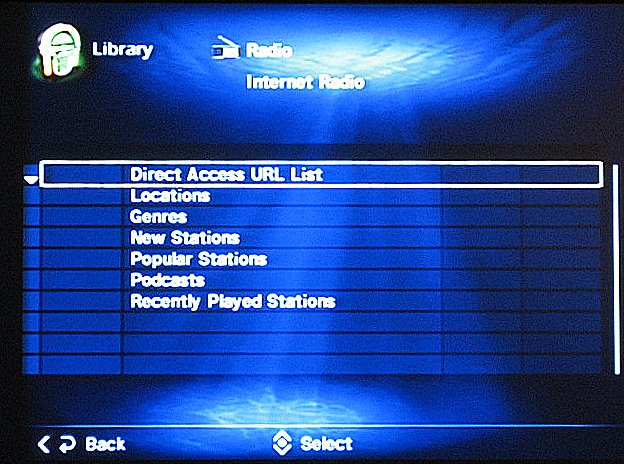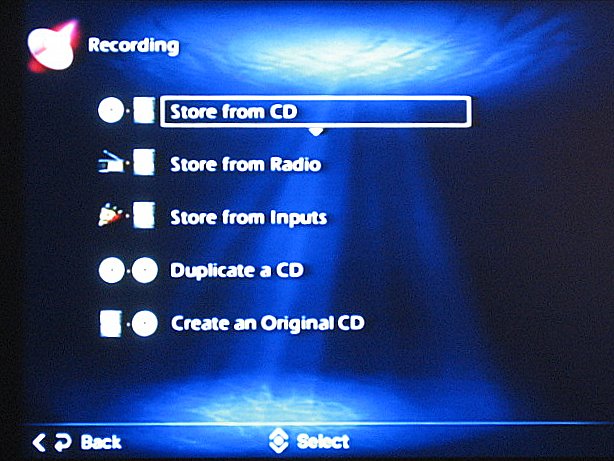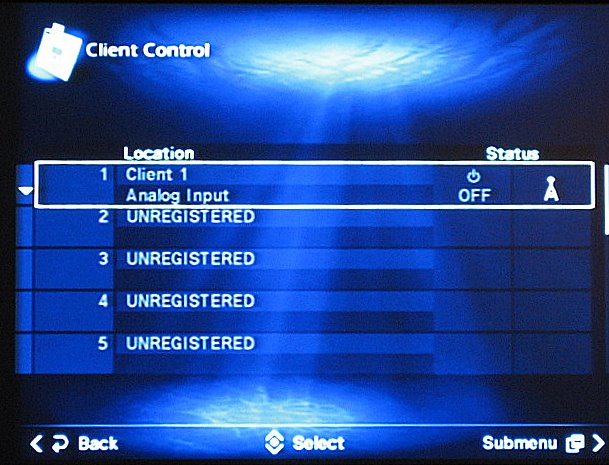|
||||||
|
The Client Connection As mentioned previously, I tested both a wired and wireless client (actually the wireless A10 client can be used in wired or wireless mode). Each can be configured manually or by using the auto configuration program. The A10 is somewhat portable in that it has a finished enclosure complete with a stand, and is about the size of a hardcover book. It does require an outlet and external speakers, and you do have to stay in range of the wireless network, so keep that in mind when you choose to move the unit about. As far as moving the speakers around with the unit, Yamaha actually makes a pair that is designed to attach to either side of the A15. You could also go with one of the many portable speaker solutions that are normally targeted at the MP3 player market. The A10 includes both RCA outputs as well as speaker outputs for its built-in amplifier (17w x 17w at 4 ohms). The wired solution includes the C15 controller coupled with the CA15 distributed audio amplifier. The CA15 can act as either a standalone amp, or can be a pass-through to your existing stereo system.
From the clients, you have several options of what sources you can access. If you have a supported Yamaha A/V receiver (which did not include my oldie-but-goodie RX-V992), and connect it to the MusicCast server via an RS-232C cable, you can listen to radio stations via the receiver's tuner, as well as any external sources connected to the MCX-2000 unit. With the wired solution, you additionally have the ability to both control the receiver and access any of its sources from the client. The I/O box that comes with the C15, or the CA15 itself acts as the interface. You need to connect your receiver's analog audio output to the control box, as well as an IR repeater from the box to the receiver in order for this to work. Obviously, in this scenario, you would only be able to control the receiver from a single client. Each client also has its own set of inputs which allows you to listen to any standard source connected directly to it. While these capabilities are excellent to have, especially for custom installers, the clients are truly designed for remote access to your archived music (the music ripped to the MCX-2000's hard drive). You can have up to five wireless and ten wired clients accessing MP3 music from the server at the same time (PCM tracks, due to their size and bandwidth requirements can only be accessed by a single client at a time). You can browse through your library as you would on the MCX-2000. The included remote control allows you to navigate the menus and control the clients from anywhere in the room, but as with the main unit, the best way to do this is by connecting the clients to an external video display. Each client has the ability to create its own bookmark list, which can then be accessed from any other client on the MusicCast network. These bookmark lists can be converted to playlists just like on the MCX-2000 unit.
The clients are certainly an integral part of the overall MusicCast system. I definitely preferred the MCX-A15 wireless client for its relative portability. These days, putting a control unit into your wall seems less useful to me than having the ability to access the system from anywhere. Still, for both aesthetics and a more advanced custom solution, the MCX-C15/CA15 solution provides a pretty good experience. As functional and elegant as the MusicCast client network is, there are two major issues with the system that I consider limiting. First, is the fact that you need to connect the clients and server to a video display to get a truly excellent user experience. I much prefer to have the display right there in my hand (like the Sonos controller for example). That way, I can browse through my music collection quickly and without having to turn on a television or projector simply to listen to music. Next, the clients can't control access to internet radio, XM radio, or network content directly. For access to these sources, you actually have to broadcast them from the MCX-2000.
You can only broadcast one source at a time, even though
the clients don't have to all listen to the broadcast. The upside is that
you can walk through your house and never miss a beat of music. The downside
is the age-old television remote dilemma – if you and your daughter want to
listen to two different XM stations in two different rooms with the
MusicCast system, you are out of luck.
The Yamaha MusicCast system is definitely well endowed
with features and functionality. It does enough to satisfy anyone from the
single studio apartment dweller, to the family of eight that lives in a
large home. Even with all the criticisms I have raised here, the positives
far outweigh the negatives. And with the continual development of the
software, some of my concerns may be addressed and fixed at a later time.
The bread and butter of the MCX-2000 and its client network are making a
large music library available throughout the home, and this it does
exceptionally well. The added features such as XM radio, internet radio, and
the recording capabilities only add to the value of the system. The
MusicCast network solution comes with my recommendation, but I would also
highly recommend the MCX-2000 as a standalone unit. If you have the need for
a centralized music server system, you should definitely check this one out. - Gabriel Lowe -
|
||||||






